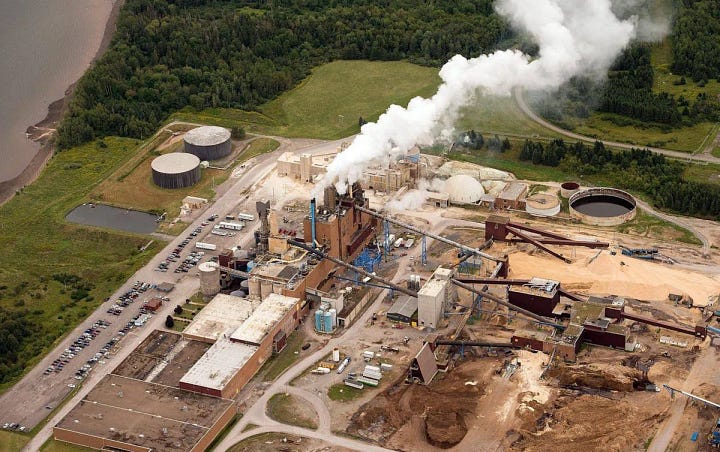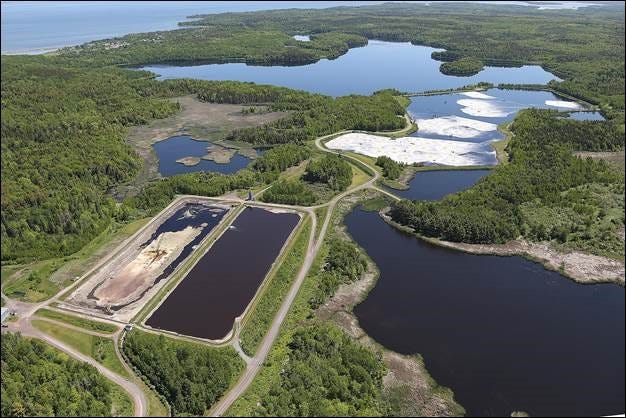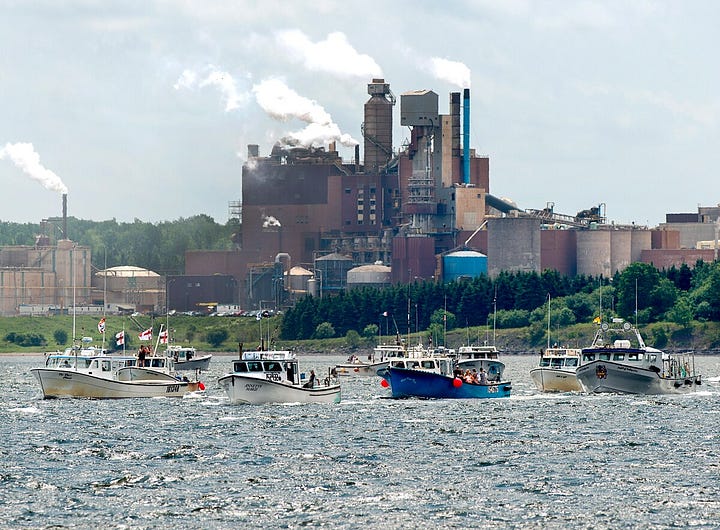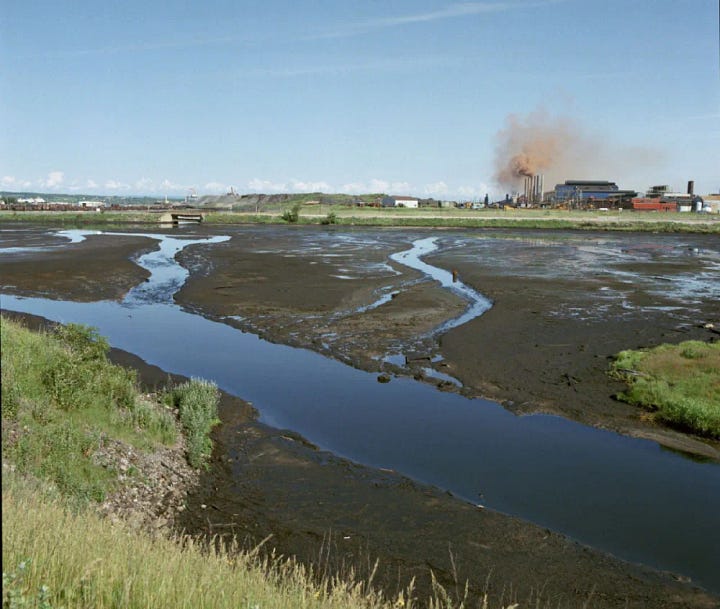Nova Scotia’s 13 Economic Opportunities: Ranked from Pipe Dream to Power Play
We put every economic idea on the table — old, new, sacred, and stupid — and asked one question: could this actually work? The answers might surprise you.
THE BEE is buzzing up on 1,000 subscribers around the town and seeing 15,000 to 30,000 readers a month, which is coming close to “a modest success” banner at the end of its first year of consistent writing. If you’ve enjoyed reading these painfully long essays about the same old stuff, chances are you know someone—friend, family, or neighbour—who might enjoy them too (or at least enjoy arguing with them).
Subscriptions are free.
So go ahead—share THE BEE. Help us grow this varied little corner of Canadian thought that still believes in hope, economics, community, and a good turn of phrase.
There are people out there, people like you, whose conscience will not release them from the problems of the day, but who, filled with a wild activist optimism, also harbour a bombastic belief in the opportunity and promise of things to come. People who purposefully leave themselves opened up to other ways of looking at things. They’re the ones who have the habit of arguing in good faith, disagreeing in full sentences, and still wanting to be friends.
Share it with them.
A countdown of 13 possible resource plays for Nova Scotia, ranked from worst to best — what should we dig up, and what should stay buried.
The Resource Countdown: What’s Actually Worth Betting On in Nova Scotia’s Next 100 Years
From coal and gold to offshore wind and green hydrogen, THE BEE ranked 13 resource ideas for Nova Scotia’s future. What works, what won’t, and what we should stop pretending about.
The new PC government came in on a 2024 platform to stay the course — healthcare, housing, helping, and listening.
SIDEBAR SUMMARY:
Here’s my accounting as of today on the Progressive Conservative “Make It Happen” election platform promises:
In very short order, they delivered on many of their promises. But then it became very clear, working on healthcare without working on the economy is not working.
You can’t fix health care if the economy that pays for it is broken.
You can’t staff hospitals when our young people are leaving to find work elsewhere.
Public services don’t run on hope. They run on revenue. And it’s gotta come from somewhere.
Because, as weird as things were, the world kind of went wild in the last six months.
Trump. Tariffs. The fall of Trudeau. Alberta separatism threatening the future of transfer payments. AI coming in hot. Markets swinging from giddy to grim.
Federal changes — and facts on the ground — made a few things unavoidable. The “immigration will save everything” plan hit the wall. The fisheries are in disarray. Our infrastructure has deferred too much maintenance. And it’s become painfully clear that Canada is going to have to support itself more, build more of its own future, and stop assuming someone else will do the heavy lifting.
But we’re not being forgotten by Ottawa. Quite the opposite — the feds are pushing hard, with carrot and stick, money and mandates, to get provinces to do two big things:
Become more self-sufficient, especially with energy.
Cut the rules and red tape that are choking progress.
The problem is process has become the product. And it’s killing prosperity.
The Hard Truth About Building a Real Economy
Of course we’ll do what everyone does. We’ll dabble in startups. We’ll chase tech incubators. We’ll turn old houses into Airbnbs. We’ll apply for every grant with the words "innovation" or "clean" in the title. We’ll invite tourists, conventions, and movies. These are the standard tools in the modern economic development kit—and they’re fine, as far as they go.
But that’s not how economics works. Not real economics. Not the kind that builds a future.
In business school terms, the goal is to find and build around a sustainable competitive advantage—something we can do uniquely well, at low relative cost, with inimitable differentiation that matters in the marketplace. It's about finding what we do that other places can’t, won’t, or haven’t figured out yet. If it's trendy and widely discussed, it's already saturated. If it's obvious, it's probably commodified. If it's something everyone thinks they can do, it won’t make us rich.
That’s why just copying the latest hype wave—AI, agri-tech, crypto, or short-term rentals—won’t cut it. These are games of diminishing returns. They might boost a few individual incomes, but they won't transform the province. They’re not strategic advantages. They're copy-paste economic cosplay.
We’re not looking for another way to cling to transfer payments. We’re not just looking to rent out what’s left of our lifestyle to tourists. What Nova Scotia needs is a way to contribute to the Canadian project. That means building something other provinces need, other countries want, and that puts us at the table of national importance.
Military spending is part of that. Transfer payments help. But our economic future lies in productive contribution, not passive participation. If we want to believe in a future filled with pride, purpose, progress, and prosperity, we need to pull more than our weight, not less.
And let’s finally get this part right: there are no easy ways or quick fixes to economic development. There is no TikTok growth hack for GDP. Every time we’ve bought into silver-bullet schemes—call centres, pulp mills, coal mines, convention centres, casinos—it’s ended in disappointment, bailouts, and debt. A cavalcade of chaos, failure, fiasco, and full-on disaster, where the only real industry ends up being the remediation industry that cleans up the mess left behind.
The next economy must be real: grounded in what we can offer, what we can do better, and what the world actually needs from us.
If we don’t get serious about this, we’ll keep recycling the same failures with newer buzzwords. And that’s not a strategy. That’s a failure loop.




So the new government made a pivot. A quick one. And they committed to putting everything on the table.
I’ve spent a lot of time in THE BEE researching and writing about each idea as it has come up and reviewing the old ideas that are getting a second look.
Digging Ourselves Into a Hole: The Predictable Scam of Rural Resource Hype
Yes!!! For sure. We should always be open to talking about our opportunities, new ideas and technologies, new ways of looking at things, and changing our minds when the facts change.
Here’s the thing: national wealth — real wealth — only comes from a few places. Four, to be exact.
We can fish it from the sea, dig it from the ground, grow it in the soil, or manufacture it.
For economic reasons, I’ve left out a lot of ‘churn’ industries. And I hope the reasons why are clear.
Most of the business we see everyday is actually an almost perfectly frictionless out-conveyor of the wealth we create. To put it plainly, Wendys, The Gap, RBC, Ford, John Deere, and every other company you can think does come here to give us anything; ‘investment’ in this sense is a ephemism. They come here to extract wealth. They’re darn good at too. Almost perfect. Though they leave a couple scraps on the table with the employees who help in the process. That money, too, is soon spent at COSCO or wherever and on its way to Toronto and beyond. Most of the rest of the jobs in Nova Scotia are helping jobs: service people, builders, doctors, dentists and care workers, lawyers… well, maybe the last is a bad example to end on — these are all important jobs we need, but they don’t create real wealth. Of all the jobs in Nova Scotia only about 10% create real new wealth. The rest churn. And that’s good too. But if we want more, we have to make more.
And in the modern world, if you want to compete, if you want to create more new wealth, then manufacturing — using capital and equipment to amplify effort and add value to raw materials — is the best way forward.
But manufacturing is a big tent now. It’s factories, sure. But also tech. Film. Value-added exports. And energy.
So here’s the real question, the only one that matters if you’re looking 10, 25, or better I believe, 100 years ahead:
What’s Nova Scotia’s best play?
Not quick-fix dreams. Not the same old hopes. But what actually moves the needle? What really brings progress, purpose, and prosperity to this place — for the long haul?
In this countdown, we’re going to explore the possibilities. Old and new.
What could work. What never did. And what just might surprise us.
Before we start… here’s a tool box full of choosing rules for BIG ECONMIC DECISIONS:
Seven Durable Rules for Choosing Our Economic Future
What’s worth building for our grandchildren?
Nova Scotia has no shortage of ideas—offshore wind, hydrogen, critical minerals, cannabis, tech startups, lobster exports, you name it. The hard part isn’t imagining possibilities. It’s choosing wisely.
Here are seven thinking tools—a sort of economic compass—for evaluating which resource industries might truly deserve our time, talent, and investment.
1. The Two-Way Door Rule
Is this a bet we can undo—or one that locks us in?
Some industries—like wind, lithium, or aquaculture—require massive up-front investments in infrastructure, permitting, and land use. Once we commit, we're in deep. Others are lighter-touch, easier to reverse if they flop.
If a resource play is a one-way door, we’d better be sure it leads somewhere worth going. If it’s reversible, we can afford to move faster and test.
2. The Regret Minimization Frame
If we don’t do this now, will we wish we had?
Picture Nova Scotia in 20 years. Energy prices have shifted, global markets have moved on, climate change is worse—or better. Which opportunities will we kick ourselves for missing?
We’re not just avoiding failure. We’re trying to avoid regret for inaction.
3. Bet on Building, Not Nostalgia
What builds skills, capabilities, and future resilience?
Some industries want us to go backwards—back to coal, back to mass tourism, back to bulk exports. But we need bets that build capacity—technical, human, ecological. What sectors build the muscles we’ll need later?
The future isn't a return. It’s a climb.
4. The Stack of Value Rule
Every option comes with a bundle of costs and benefits. Unpack them.
Take offshore wind:
High infrastructure cost
Big green credentials
Potential energy export market
Risk of foreign capture
Take cannabis:
Jobs today
Fragile markets
Weak moats, high competition
Cultural/legal volatility
Instead of arguing if it’s "good or bad," ask: What’s in the stack? And does it add up?
5. The “Hell Yes” Filter
If no one’s excited to build it, maybe we shouldn’t.
Economic development driven by consultants, subsidies, or legacy politics rarely lasts. The good bets usually have real believers—builders, entrepreneurs, inventors—already in motion. Look for enthusiastic competence.
If an industry only exists because government wants it to, it might be a zombie.
6. The One-Level-Up Rule
Talk to the places five years ahead of us on the same path.
Who's already doing this? What happened to them?
What did Ireland learn about data centres? What did Norway learn about aquaculture? What did Alberta learn about over-reliance on one sector?
If a future is already playing out somewhere else, we don’t have to guess. We can learn.
7. Watch for the Local Maximum Trap
Just because something’s familiar doesn’t mean it’s smart.
Nova Scotia is full of habits that look like strategy: export raw stuff, beg for federal money, hope for cruise ships. But that might just be the best we could do yesterday.
Don’t confuse what we know how to do with what we ought to do.
8. The Century Test
Will this still matter in 100 years?
Imagine Nova Scotia in the year 2125.
What will people need? What will they thank us for—or curse us over?
A lot of today’s chatter will be forgotten. But energy systems, land use, environmental choices, and talent development echo through generations. Some decisions don’t just shape careers. They shape coastlines, communities, and culture.
If it won’t matter in 100 years, maybe it’s not worth betting the farm on.
Use these tools as we count down the 13 big ideas.
They won’t hand us the answer, but they’ll make sure we’re asking the right questions. For a place as small and storied as Nova Scotia, that might be the difference between chasing monorail dreams with colourful grifters—and building something worth inheriting.
Here’s the countdown:
WORST TO BEST RESOURCE PLAYS FOR NOVA SCOTIA - The 13 Top Possibilities
13. Coal
Verdict: Dead industry walking.
Globally phased out, carbon-intensive, and politically unpalatable.
Nova Scotia's remaining coal use is under active retirement.
No modern economy is building a future on coal, and neither should we.
Score: 0/10
Best case scenario: Keep it in the ground and bury the idea with it.
12. Gold Mining
Verdict: Dirty, short-term, and largely foreign-owned.
High ecological damage (mercury, arsenic, leaching) for low local benefit.
Most gold mines in NS are fly-in/fly-out ventures with profits leaving the province.
Often generates public opposition and long-term cleanup liabilities.
Score: 2/10
Best case scenario: Strict limits, targeted royalties, price spikes, maybe one or two tight operations if regulated hard. But a proven long-term failure.
11. Oil & Gas (Onshore/Offshore)
Verdict: Late to the party and wearing yesterday’s clothes.
Offshore rigs are aging, expensive, and unlikely to be revived at scale.
Global investment is moving away from hydrocarbons.
Restarting oil or gas would require federal approval, massive capital, and a shrinking market window.
Score: 3/10
Best case scenario: Possibly a niche role as part of peak transition, but NS missed its window. The world is past peak oil and gas.
10. Traditional Forestry (Pulp & Logs)
Verdict: Mechanized and marginalized.
Industry consolidation and automation mean fewer jobs than ever.
Clear-cutting, glyphosate, and biodiversity concerns erode social license and other truly valuable long-term good stuff - like our woods and waters.
Doesn't add meaningful new wealth unless reimagined.
Score: 4/10
Best case scenario: Phase into more sustainable silviculture or shift to adding value and story to the forest.
9. Gravel, Stone, Aggregate
Verdict: Essential, but small potatoes.
Needed for housing, roads, and concrete—but low-margin, localized impact.
Can disrupt local ecosystems and generate friction with communities.
Not transformative, but reliable and simple.
Score: 4.5/10
Best case scenario: Use it to fuel construction, but don’t pretend it’s economic strategy.
8. “Do Nothing” (Preservation Mode)
Verdict: Politically satisfying, economically suicidal
No new development means no new income, and deeper dependence on federal transfers.
Preserves environment, yes—but locks in stagnation.
Some areas might benefit from conservation tourism or ecosystem services—but not at scale.
Future potential: 5/10 — ethically sound, but unsustainable. Only for people who hate people.
7. Rare Earth Minerals
Verdict: Strategic, but speculative.
Essential for batteries, electronics, and defense, but NS has no refining capacity and unproven reserves.
Risky without federal investment and long-term partnerships.
Could be valuable, but it’s a narrow road.
Score: 5.5/10
Best case scenario: Attract a federal processing hub and tie it into North American supply chains.
6. Industrial Minerals (Gypsum, Barite, Salt, etc.)
Verdict: Quiet workhorses of the economy.
NS has long mined these materials, and they still matter—especially for construction and energy storage.
Barite (used in medical imaging and drilling), gypsum (drywall), and salt (storage caverns) all have future uses.
Limited growth potential, but solid, local economic activity.
Score: 6/10
Best case scenario: Add value through processing, not just extraction.
5. Small Modular Reactors (SMRs)
Verdict: Strategic but not ready.
Canada is investing in SMRs, but timelines are long and no working models exist yet at scale.
Could pair with uranium development, but NS has no nuclear infrastructure or workforce.
May prove essential someday—but not soon.
Score: 6.5/10
Best case scenario: Plan now, pilot later, maybe host one by 2035.
4. Lithium & Critical Minerals
Verdict: Potential —but unproven here.
Demand is soaring for EV batteries, solar panels, and AI hardware.
If NS has meaningful deposits, it could become a critical node in a global supply chain. Or it could just undermine other established Canadian sources.
But no major discoveries or processing commitments yet.
Score: 7/10
Best case scenario: Federal partnership, private-sector exploration, and a Canadian refining ecosystem.
3. Value-Added Forestry (Forestry 2.0)
Verdict: Sustainable, job-rich — but size-limited.
Cross-laminated timber, biochar, and engineered wood can turn small harvests into big value.
Builds clean jobs and fits the climate transition. We can make our on stuff and things we are proud of.
But NS has limited forest area left to sustainably harvest, and volume won’t compete globally.
Score: 7.5/10
Best case scenario: Niche leadership in high-end wood products with rural industrial hubs. A new plywood manufacturing and design culture for boats and furniture.
2. Onshore Wind + Hydrogen
Verdict: Feasible now, but bleeding from a thousand cuts.
Can be deployed fast, uses provincial land, and feeds green hydrogen systems.
But large-scale builds are vulnerable to consultation friction, NIMBYism, and expensive benefits packages (more on this coming up in THE BEE).
Great for pilot projects, maybe even mixed with solar in distributed service local energy— difficult to scale without massive political will.
Score: 8.5/10
Best case scenario: A few serious projects with Indigenous and local equity, strong policy shield. Or breakthrough distributed service models in new and revived communities.
1. Offshore Wind Energy (Export + Grid)
Verdict: The one idea big enough, green enough, and real enough to matter.
Vast, high-quality wind zones off the coast — ideal for large-scale export via hydrogen or clean ammonia.
Attracts federal investment, foreign capital, port upgrades, and global buyers.
Doesn’t compete with land use, and bypasses many provincial bureaucratic bottlenecks.
Picks up on Trump’s ‘windmill’ hating opportunity window.
Offers a national contribution, not just a local payoff.
Score: 10/10
Best case scenario: Nova Scotia becomes the clean energy capital of Canada — maybe the hemisphere.
Final Verdict
Nova Scotia doesn’t need more resource schemes. It needs one bold, plausible plan to carry for the long run.
Offshore wind — scaled wisely and shared broadly — is our best chance at real prosperity, real sovereignty, a real role in the future of energy, and a real contribution to the new Canadian century ahead.









Re: Items 6 or 4, NS lists two base materials, samarskite (Cobequid) and monazite (Canso) which can produce samarium. Huge up front costs, massive competition from China but also, only France and one mine in Nevada could produce that for North American or European military battery tech (or possibly ITER type reactors) and neither place is anymore. It seems to me someone should bite the bullet and make this a state supported industry so China can't restrict it.
You don't mention tidal power at all. I know, it's not really a thing here. However, it's local (Bay of Fundy), irreproducible most other places and it would add to the resilience of the overall energy grid. The South Koreans and the British have both had some successes, we've had some failures, but I fail to see why we couldn't try, try again as they say. We should be able to produce enough off of one of the newer (British/South Korean type) turbines to power Truro. That's not nothing and it's steady energy. Hell, with more water melt from the poles and Greenland it might just mean more powerful tides 100 years in the future. Anyway, I don't know enough about the challenges but it does seem like a missed opportunity.
I think you've done a good job at outlining the risks and opportunities for Nova Scotia, but find it odd that you would highlight the importance of considering the impacts on our environment, being wary of projects only supported by government with a decided lack of enthusiasm from the rest of the population, and a vision for what Nova Scotia should be 100 years from now... and THEN rank critical mineral development in your top five without acknowledging the significant detriment it would cause to the health and safety of our population. 100 years from now people will look back and think- you opted for resource extraction in a densely populated area that negatively affected human and environmental health???
I agree- let's be bold. Let's invest in the future, let's set Nova Scotia up for a history of prosperity instead of a history of cancer and destruction. Offshore has huge potential and there's many excellent best practices to learn from.